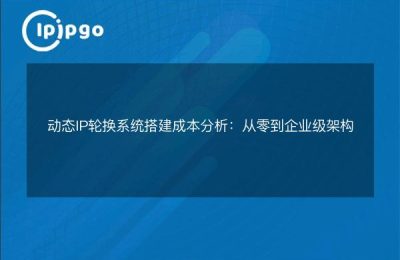
Why Amazon Multi-Store Must Use Hybrid IP Solution?
Anyone who does Amazon multi-store operations knows that the platform is most leery of account association. Many sellers only realize it when they are wrongly convicted of association:Dynamic IP alone is easy to recognize the pattern, only static IP and traces of useThe following is an example of an unusual behavior. For example, if you log in with a U.S. IP in the morning and then suddenly switch to a German IP in the afternoon, this abnormal behavior directly triggers wind control.
We have tested and found that mixing dynamic + static IP combination program can increase the store survival rate by more than 70%. Dynamic IP is used for daily high-frequency operations (product shelves, customer service replies), and static IP specializes in sensitive operations (payment settings, advertisement placement), so that the operation track can be masked and the stability of the key links can be maintained.
Dynamic / static IP in the store operation of the practical division of labor
Let's start with this comparison table:
| Type of operation | Recommended IP type | caveat |
|---|---|---|
| Product Batch Shelving | Dynamic Residential IP | Change different city nodes for each operation |
| Advertising account management | Static Dedicated IP | Fixed Country + Fixed Time Login |
| Customer Message Response | Dynamic Mobile IP | Simulates real user network fluctuations |
Here's a key detail:Dynamic IPs should be chosen from a pool of real residential IPs. Residential IP pools like ipipgo's 90 million+ residential IPs can accurately match the characteristics of local residents surfing the web. For example, when logging in with a Texas residential IP, it automatically inherits local ISP (e.g., Comcast) and time zone parameters, real data that server room IPs can't do.
Three steps to land a hybrid program
There are three levels of implementation:
- base layer: use ipipgo's static IP to bind the main account, it is recommended to choose the residential IP of the country where the target market is located (e.g., to do the U.S. site, use the Chicago residential IP)
- operating layer: daily operation actions through dynamic IP rotation, pay attention to set a reasonable switching interval (recommended every 30-50 operations to change the node)
- protective layer: Enable payment verification, account appeals, and other key aspects of theStatic IP + Device Fingerprint CamouflageDual Protection
Three potholes that must be avoided
Many sellers fall prey to these details:
- ❌ Sensitive operations with data center IP (too obvious a feature)
- ❌ Multiple stores share the same IP segment (even if they change ports they will be associated)
- ❌ Ignore DNS leaks (recommend turning on DNS protection in the ipipgo backend)
QA Session: Hands-on Questions You May Care About
Q: How to set the frequency of dynamic IP switching?
A: Adjusted according to the intensity of the operation. Ordinary stores cut 3-5 times a day, pop-up operation is recommended to cut 1 time per hour, pay attention to keep the work and rest time reasonable.
Q: How long does a static IP work and how long does it need to be replaced?
A: ipipgo's static residential IPs are recommended to be used for a maximum of 90 days, during which time they should simulate normal user behavior (intermittent downtime, irregular operations)
Q: What should I be aware of when logging into multiple stores at the same time?
A: In addition to IP isolation, you should also do browser environment isolation. Recommended configuration for each storeSeparate IP + Separate Browser Fingerprintof the portfolio program.
Using ipipgo's pool of residential IP resources with a scientific switching strategy can effectively solve the core pain points of multi-store operations. Remember:Real user network behavioral characteristics are the best weapon against platform algorithmsThe








